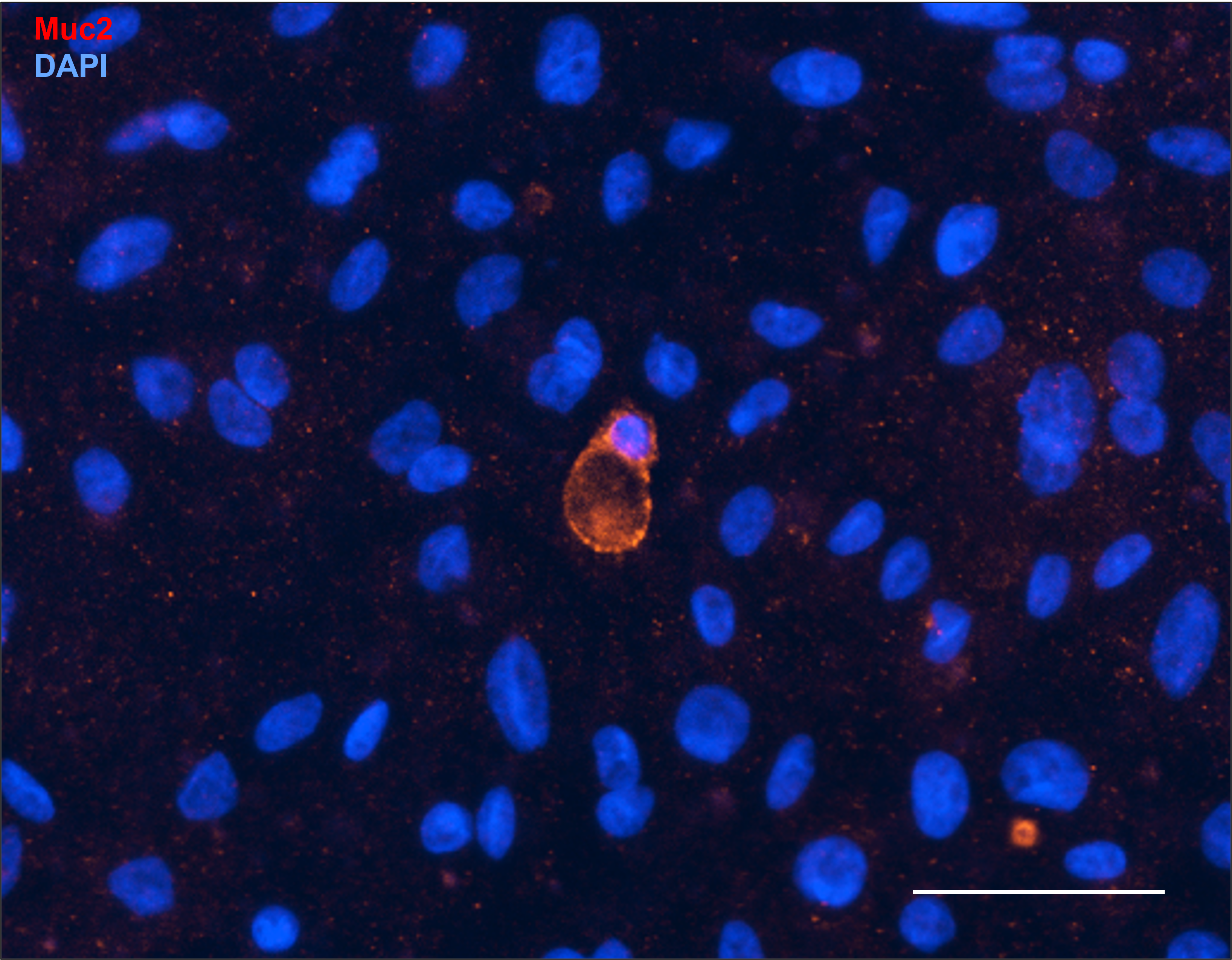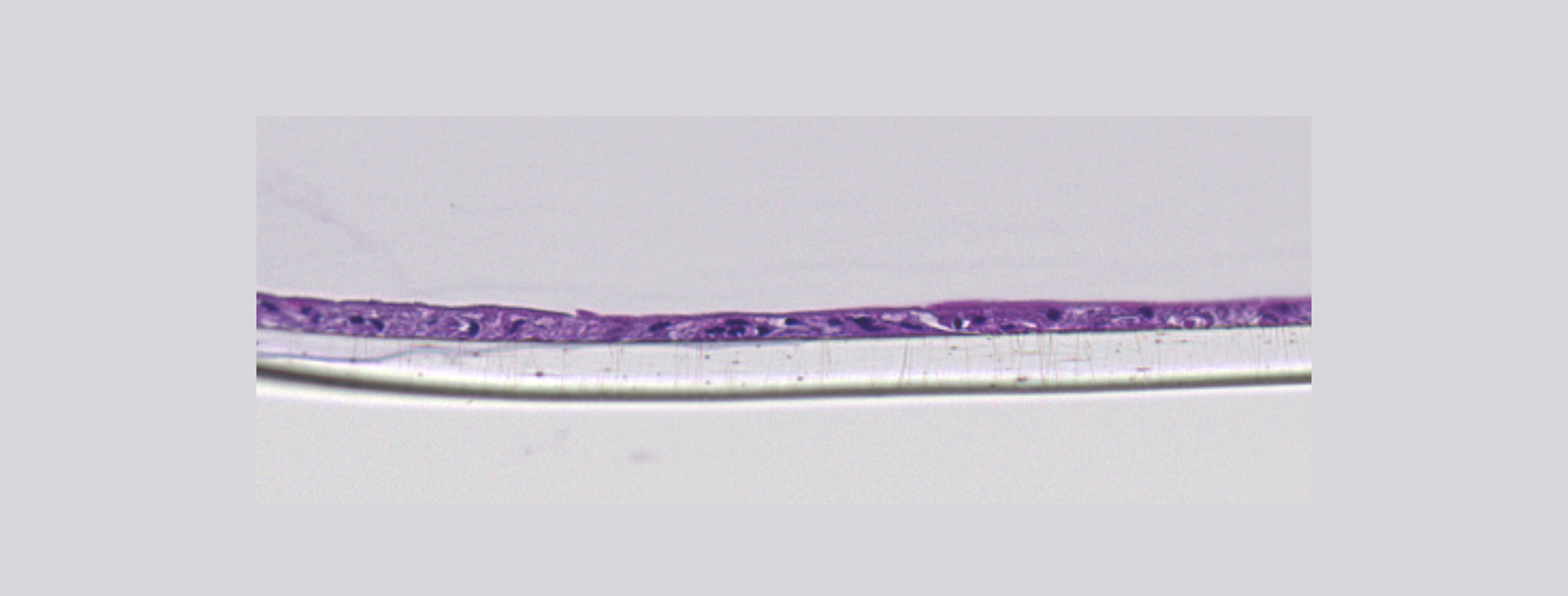In vivo, the intestinal epithelium forms a physical barrier that prevents the uptake of toxins, antigens and pathogens. It is maintained by tight junctions (TJs) that seal the space between adjacent epithelial cells, creating a selectively permeable barrier. Both systemic and orally administered drugs can have toxic effects on the intestinal epithelium, by either inducing cell death or affecting TJs. The disruption facilitates the access of harmful substances to the bloodstream.
The three-dimensional structure of an organoid mimics the tissue architecture and function of the small intestinal epithelium. However, although their geometry allows easy access to the basal surface, the luminal surface, being located within the organoid, is not accessible. To overcome this issue, Epistem has generated organoid-derived monolayers.
The monolayers are grown on permeable supports which allow direct access to both the basal and the apical compartments of the epithelium, whilst maintaining the differentiated cell types present in the organoid.
The formation and integrity of the monolayer is monitored over time by measuring the trans-epithelial electrical resistance (TEER) and by assessing the permeability to FITC-Dextrans. Cell death can be monitored by quantification of the Lactate dehydrogenase (LDH) released by dead cells into the medium, and effects on the integrity of the tight junctions can be evaluated by immunofluorescence.
A range of assays can derive dose response (IC50/EC50) and other parameters:
- TEER/permeability assays
- Cytotoxicity/proliferation assays
- Protein/gene expression



